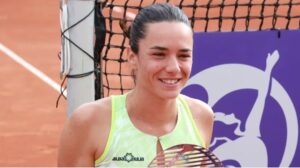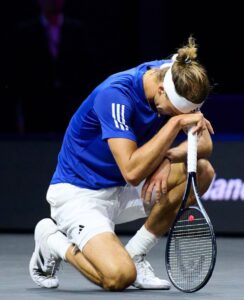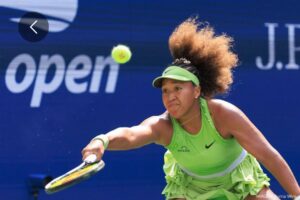Whether at the pro or youth level, the renowned Swede’s devotion to progress and improvement remains the same.
Magnus Norman was on top of the world in 2000. He had just reached the Australian Open semis and a Roland Garros final, and was ranked #2 in the world. But things change quickly in tennis, as Norman was dealt crushing injuries that forced him to retire just four years later.
Norman was ready to leave the tennis bubble and find another passion in life. But the sport had other ideas, using its gravitational pull to bring the Swede back. He quickly became a coach that yielded result and respect at the highest level. Norman coached two players to their career peaks and began the first high-level academy in his home country. “Good to Great” is the name of that academy, but that phrase is so much more to the man who lives it out each day.
Norman joined the Inside-In Podcast to reminisce on his some of his coaching highlights, explain his core principles—and reveal how he truly wants to be remembered.
This is what I love to do. This is my life. This is Magnus Norman.
Norman didn’t have to look very far for inspiration when he started his tennis journey. He followed the Swedish lineage of excellence that included Bjorn Bjorg, Mats Wilander and Stefan Edberg. His playing career was a success by any metric, but it due to hip and knee injuries, it did not have the longevity that Norman longed for.
Retiring before 30 was a tough pill for him to swallow, and Norman left the world of tennis for education and other ventures. But when fellow Swede and his former doubles partner Thomas Johanssen reached out to ask if Norman would coach him, it invigorated something dormant.
“I took a one-week holiday from my work,” Norman recalled about his trial run with Johanssen, at the Memphis Open. “From that moment I said, Wow. This is what I love to do. This is my life. This is Magnus Norman.
“From that moment on I was hooked. And I never came back to work again, I stayed in tennis.”
After a short but successful partnership with Johanssen, Norman began working with Robin Soderling. The towering Swede entered 2009 outside the Top 10, and off the radar to those examining the game’s very best. Norman worked to change that, and with in doing so helped create one of the sport’s all-time upsets: Soderling’s win over Rafael Nadal at Roland Garros.
Rafa was the reigning four-time champion and was undefeated on the terre battue. The Spaniard had also drummed Soderling in Rome the month prior—6-1, 6-0—and their rematch in Paris wasn’t expected to go much differently.
It did, but not in the way most expected.
“There were some things in that match that I felt were not too far off. It could have been a closer match,” Norman said of the Rome encounter. “Everything that we talked about in the gym at 1:00 A.M. in Rome, everything sort of clicked [in Paris].
“It was very important to be the one that was striking the ball first,” the coach continued. “And if you can win one set against Nadal, maybe you can win two. And perhaps there is a possibility to win three. No one believed in him, but he did it. And it was a remarkable performance.”
Norman may be best known for his outstanding work as the coach of Stan Wawrinka, who won three major titles in an era dominated by the greatest players the sport has ever seen. When their partnership began in 2013, Wawrinka did not have the outward confidence that he’s since become known for. Norman instilled that in him, and his player put the time in to transform his game.
“From being an underachiever in bigger matches in finals and bigger tournaments, he sort of got the reputation of being the big-match player,” Norman said.
The pair took breaks from their relationship in the past, as Norman wished to spend more time with his kids. But they remained close, and in 2022 they reunited for the final push of Wawrinka’s iconic career. For Norman, it was the easiest decision imaginable.
“I was always his coach. I could never coach anyone else as long as he was playing. We are that close.”
If you can win one set against Nadal, maybe you can win two. And perhaps there is a possibility to win three.
Norman’s advice to Robin Soderling at Roland Garros
Norman has established himself as one of the top coaches in the game, and that doesn’t just extend to the professional ranks. It’s always been important for him to impart knowledge on youth, and he remains devoted to giving junior players access to elite tennis teachers with his academy.
Norman discusses more than just his immense accolades on this episode of Tennis Channel Inside-In. The coach dives into what makes him tick, the importance of hard work, and why witnessing a player progress at any level is what it’s all about.
As far his legacy goes, Norman’s has different priorities that highlight his humility more than his tennis prowess.
“I want to be remembered as a great guy hopefully, a good friend. And someone that is working very hard both as a player and also as a coach. I think that’s the legacy I want to be remembered for.”



